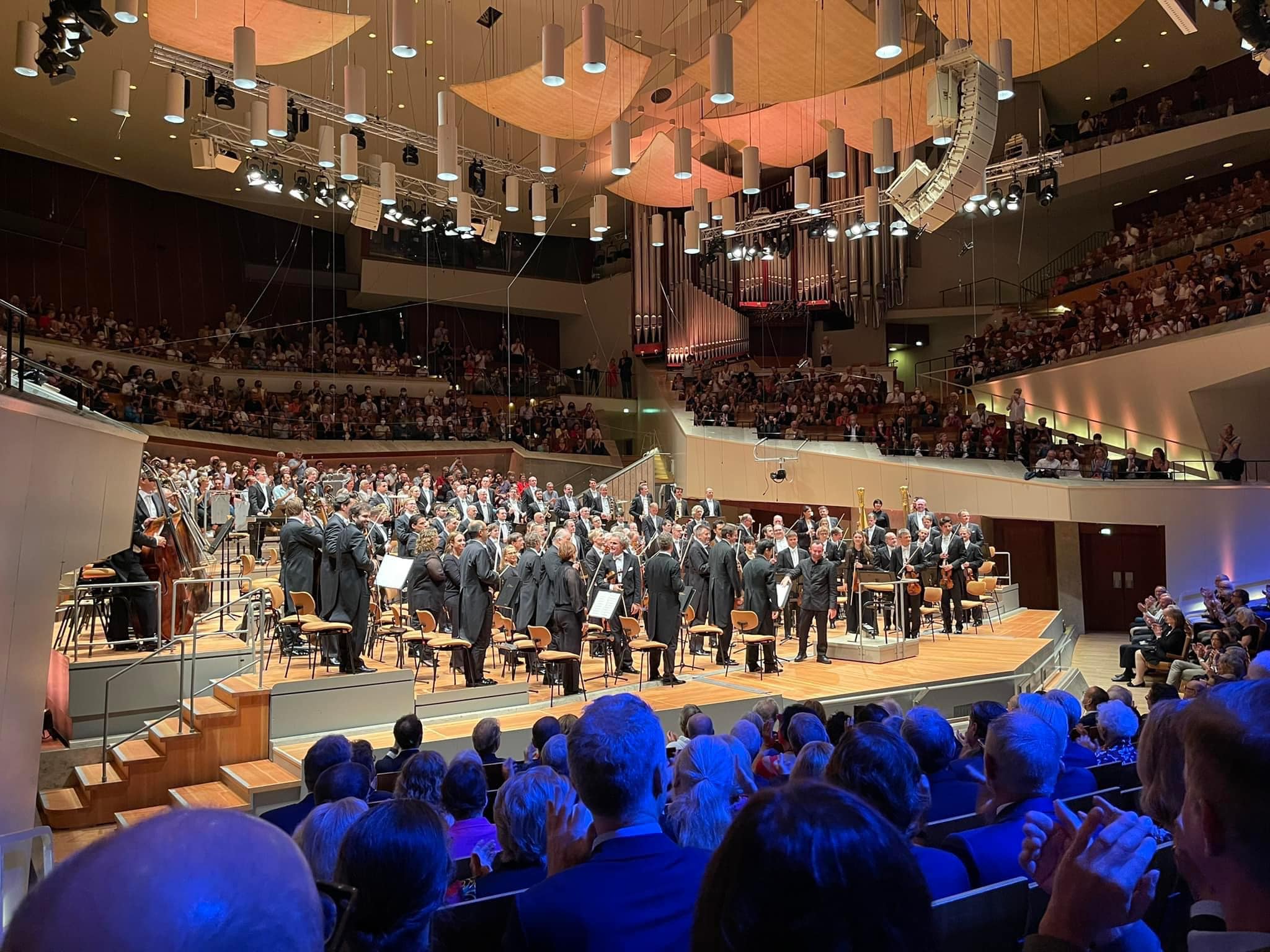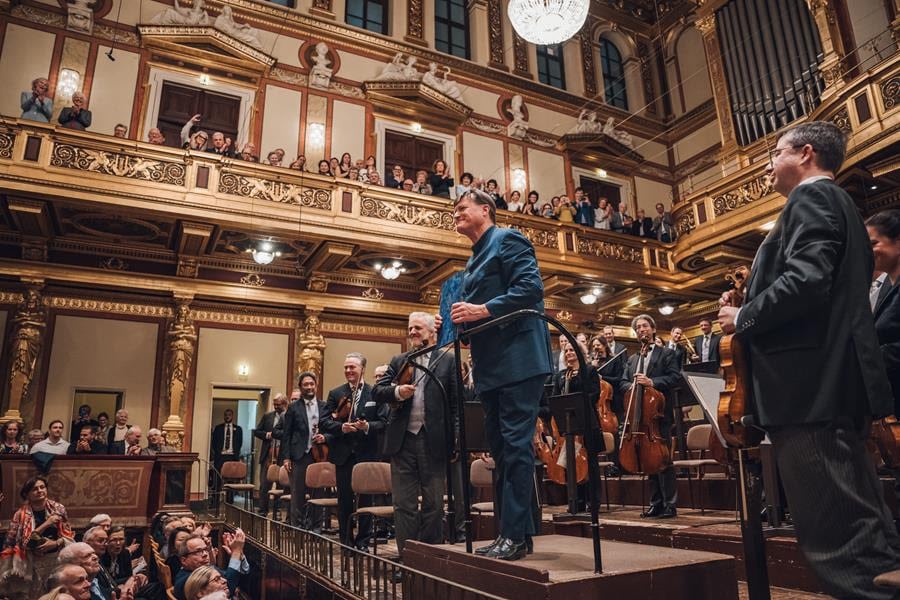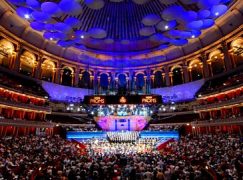Beethoven: What’s your fantasy? Not the same as mine
mainWelcome to the 56th work in the Slipped Disc/Idagio Beethoven Edition
Piano sonata no 13 ‘quasi una fantasia’, opus 27/1 (1801)
The opus number 27 contains one of Beethoven’s most enigmatic sonatas, followed his most evocative, the inimitable Moonlight.
What on earth was Beethoven getting at when he described the sonata as being ‘like a fantasy’? He left no explanation, and the repetitive nature of the opening passage, returning every four bars to E-flat major, is a significant deterrent for searchers of truth and beauty. The great British analyst Donald Tovey excused the composer by showing how the sonata ‘becomes formidable as it proceeds’, so Beethoven was maybe deceiving us with a prosaic beginning, but that thought begs more questions than it resolves. It’s as if he’s saying to the interpreter: I’m getting bored with this, you decide what it means.
There are multiple entrances to this maze. Arthur Schnabel in 1932 whispers his way in, treating the whole work as a personal confidence between the composer and himself. Wilhelm Backhaus (1952) drums out a metronomic tempo as if he were drilling young recruits. Friedrich Gulda (1953) embarks on an interior monologue of a kind we do not hear again until Glenn Gould practically rewrote the sonata to his personal predilections, singing the opening theme so loudly that the piano sounds almost like accompaniment. Even to the greatest of Gould fans, this performance runs close to an abomination.
If truth lies between the notes, Claudio Arrau (1960) is content to keep us waiting. He is sitting in a BBC studio with all the time in the world, knowing that no-one can go home until he has finished. As so often with Arrau, you really don’t want it to finish. Annie Fischer (1977) is unnaturally tentative; the surpassing authority of Emil Gilels (1980) is slightly undermined by the simplicity of his material. With Gilels, I often want to sing out loud.
So much is written about Rudolf Serkin that one easily forgets what a marvellous artist his son Peter turned into. After dropping out in the late 1960s and going to live in Mexico, Peter Serkin returned to play more or less as and when he pleased. He specialised in new works by mostly American composers but maintained a strong classical involvement and was among the first to record Beehtoven both on foretepiano and on a modern grand. He recorded this sonata for RCA in the year 2000 and gives it the refreshing insouciance of a man who has nothing to prove and is not interested in what people think. It’s a performance that has qualities of the young Gould and the mature Gilels, a truly potent blend.
Jonathan Biss (2016), son of the outstanding violinist Miriam Fried and grandson of the cellist Raya Garbousova, has similar blessings or burdens of musical ancestry. He tends to extremes in this concerto, cracking into the first presto at way over permitted speed limits, but you sense that he has demons to fight and vanquish before he can put this pesky sonata to bed. Igor Levit (2019) is, by comparison, prosaic. The Turkish pianist Fazil Say (2017) outdoes all others in the fidgetiness of his tempi; stick it out past the opening passages and rewards await. Say is a serious artist, even if he does not always sound that way on first introduction.
Put me up against a wall and press me for a final choice? Well, there is one that comes to mind.
In 1967, for the opening of the Queen Elizabeth Hall on London’s South Bank, Daniel Barenboim performed a cycle of Beethoven’s 32 piano sonatas and recorded them for EMI. It was a seminal year for the young pianist, still only 24. He was about to get married to the glorious Ebglish cellist, Jacqueline du Pre, a wedding solemnised in Israel just after the Six Day War. He was also beginning to make a parallel career as a conductor, with the English Chamber Orchestra and with some American ensembles. His life was just taking off, and the launchpad was the London cycle of Beethoven sonatas, placing him at the head of his generation.
Forty years later, when Barenboim returned to repeat the cycle, he was music director of the Staatsoper in Berlin and one of the most influential musical voices on the world stage, with frequent interventions in the Middle East deadlock and other political issues. In his second London cycle, in 2008, he sold out the huge Royal Festival Hall over the course of eight evenings and created a buzz the like of which London has seldom experienced for a sequence of piano sonatas. When the BBC asked if it could broadcast the recitals Barenboim refused, saying he did not want to give ammunition to the London critics who always took him to task for playing wrong notes. I suspect that this was an inelegant evasion: actually, he did not want the external dimension of broadcast and recording to intrude on his inner fantasy.
Among the 1967 EMI recordings, the 13th sonata is full of fantasy, taken at a fairly pedestrian pace and growing into a chase around the houses, leaving the listener in a state of uncertainty as to whether or not the whole sonata might collapse in a heap. That performance still leads the field for sheer élan, daring, devilment and decisiveness. Unformed as the pianist might be, he seems to have all the answers.
Four decades later, in a rare appearance on Decca, Barenboim is paradoxically less sure of himself, more hesitant in the opening touches, almost struggling to define differences between the persistent repetitions. Yet the more I listen the more I appreciate the mature self-doubt to the youthful cockiness, the recognition that not everything is as easy at it seems on first sight. This is a reading to treasure, a testament to the things we learn in the course of a long public life. Beyond fantasy, it finds fulfilment.







“Quasi una fantasia” is “nearly” a fantasy and not “like” a fantasy. That makes a lot of difference.
I like to imagine this pair of sonatas as more free-flowing. There is a move away from self-contained movements and perhaps more segues between them.
I was wondering if I might share thoughts about the C-sharp minor sonata as it tends to be misunderstood.
Many pianists drag out the first movement, especially the triplet quavers. I see it done this way too frequently, and Fazil Say’s version might be one of the most recent offenders in this regard. Beethoven wants this movement to be a cut time Adagio, not a drawn-out common time Adagio. The minims need to set the pulse. If they do, the triplet quavers can move and flow more freely. Also, they can be a reminder of The Well-Tempered Clavier and anticipate the stormy semiquaver arpeggios in the finale.
I like the pianists who get this balance right. Andras Schiff’s ECM version is one of them, though I don’t entirely agree with his decision to hold the sustaining pedal for the entire movement and blur the harmonies. Believe it or not, Wilhelm Kempff’s stereo version tilts in that direction too.
Beethoven Fantasia op. 77
Edwin Fischer, Munich 1952.
Strongly suspected to be the written-down version of his improvisation during his ‘Akademie’ of 22. XII. 1808. Amazing piece.
I’m inclined to the view that Beethoven was indicating that neither of the Op. 27 sonatas is in the expected sonata form, though No. 1 is clearly in the older Church Sonata form, also used in some works by Haydn and Mozart. The two works are less adherent to strict sonata form than the later sonatas. If he hadn’t used the term ‘sonata’ at all, terming the works as simply fantasia, you would have two works not akin to his Op. 77, but that might educe analysis that includes reference to Chopin and Schumann, Chopin’s Fantasia in movements without breaks, Schumann’s longer work with clear breaks.
Ah, this marvellous, marvellous work! Everything is connected, developed/varied and structured, from the opening motif, growing outwards. I recommend Rudolf Reti’s and Schenker’s thoughts on this, and I particularly salute Alfred Brendel; he chose this work in programming his last appearances and it was NO accident!
It’s one of my favourite sonatas too, along with op 54 and op 78. Great fun to play (and the finale is SO difficult!)
It’s Schnabel for me in spite of the flaws.
My ideal pianist: Artur Schnabel with the fingers of a Horowitz or Richter.
There is a video on Youtube of Claudio Arrau playing this sonata. This is from the mid 70s. The phrasing in the second movement is utterly beautiful. This is my favorite version by far.
This is a seminal work that deserves to be better known. The Allegro vivace finale, in particular, marks the beginning of a compositional experiment to which Beethoven continued to return through the years.
Maurizio Pollini recorded this sonata in 1992, shortly before he played his first complete Beethoven Piano Sonatas cycle in Berlin and Munich. His playing here is almost romantic in style, and one senses a playfulness and an emotional warmth often missing from his Beethoven interpretations. It is Beethoven played like Chopin – and all the better for it!
I have Mr Barenboims 1967 ten CD set. The confidence of youth subsides with age, but to be fair such performers need much more confidence than us average Joe’s.
Barenboim’s last [Decca] recordings got relatively small attention but it is in my opinion his best cycle.
It’s also interesting the funeral march of Sokolov. and more in the style of Arrau, I find Bruno Gelber’s version as superlative, the music and tension BETWEEN the notes and his glorious sound remain unbeaten
While many here may offer their favorite recordings, I am impressed with the excellent writing by NL. Being informed, personal, and subjective, it invariably promotes discussion. There is no greater purpose or need when it comes to classical music.
It’d good to see the several mentions of Beethoven’s actual Fantasy in G-minor/B-flat, Op.77, which Schnabel and Serkin played and recorded. Better yet, Micaelo Cassetti recalls Edwin Fischer’s superb version of it in good sound and shape in A&E’s big box of,Edwin Fischer air-checks and live performances, many preserved by his student Paul Badura-Skoda. Many rarities, a set of Schumann variations, Beethoven’s first concerto, Mozart’s two-piano concerto and piano quintet with winds, &tc.
More recently I’ve liked Paul Lewis and Andras Schiff among others. The Fantasy Op. 77 is a rare written-out example of Beethoven’s famed improvisations that so many of his contemporaries thrilled to and described. Another probably is the solo piano introduction to the Choral Fantasy, and several cadenzas strengthen the legend. Ten ppoints, Micaelo!
zSapristi!, as Ludovico Settembrini would say.
Wilhelm Backhaus surprised me by his tenderness in Sonata 13, as he did also in Haydn sonatas and variations.